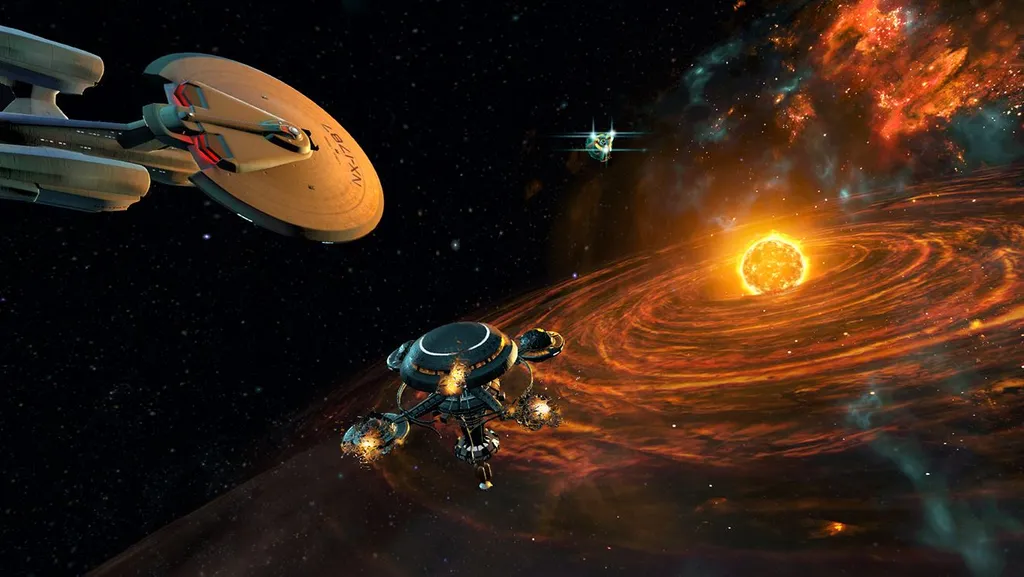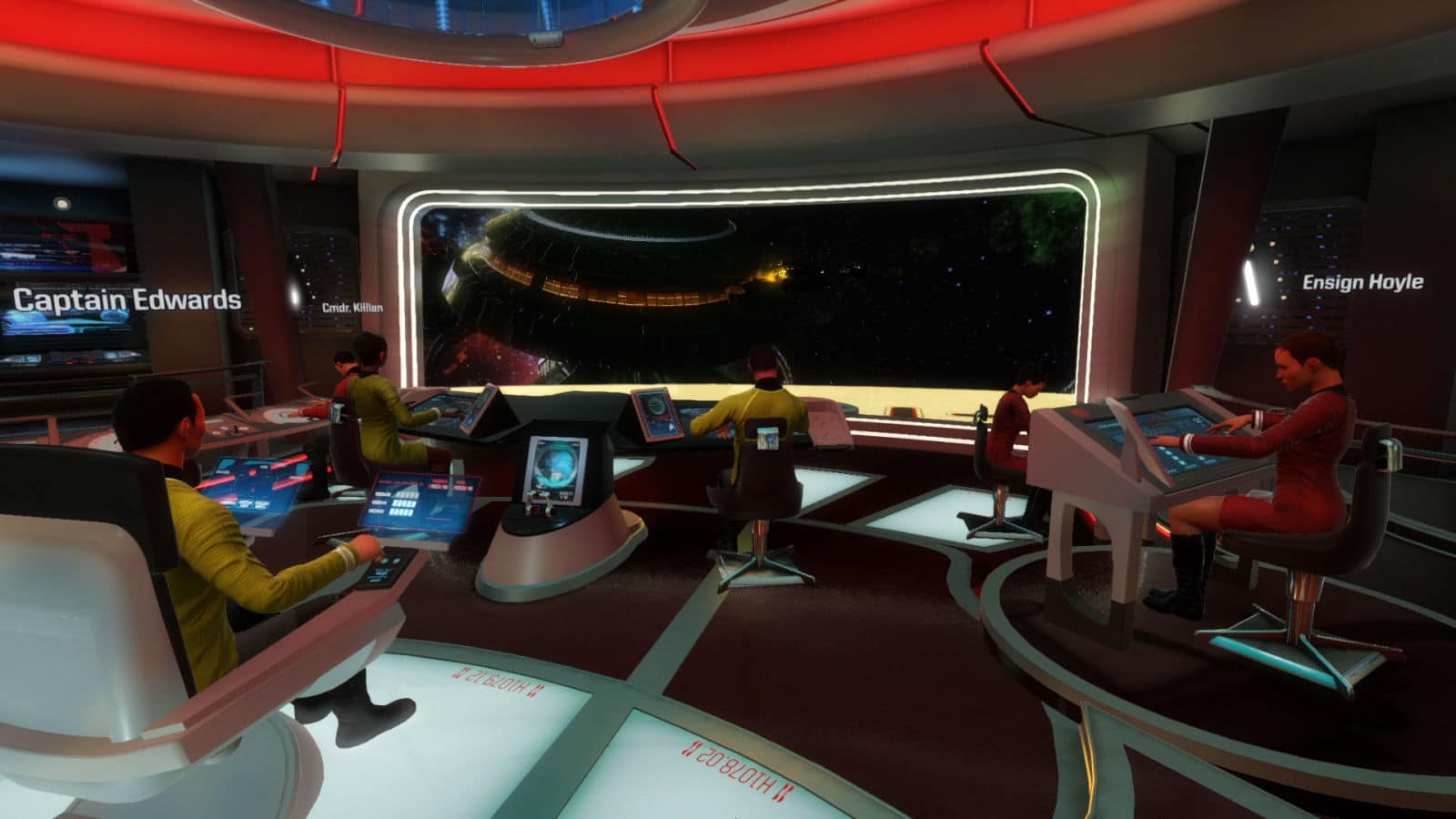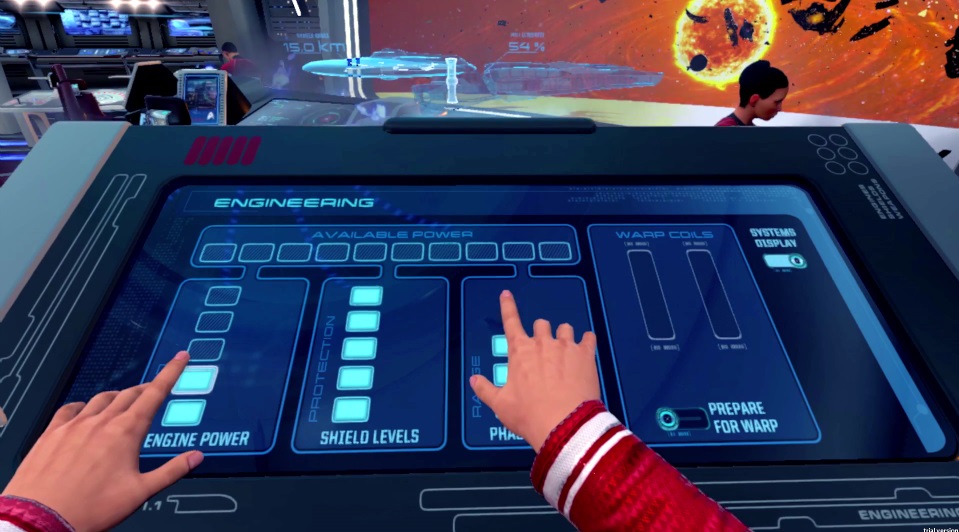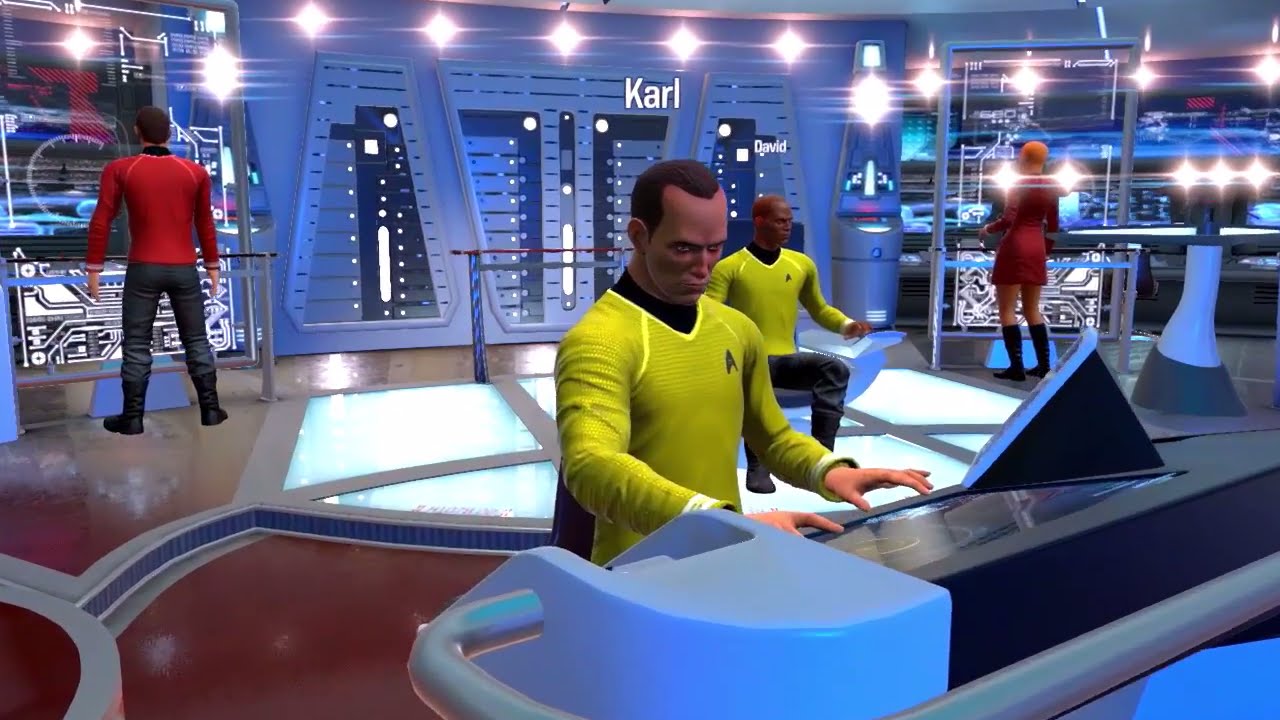Many of us have watched hundreds of hours of Federation officers doing their part to keep a starship soaring. Even if you aren’t a fan of Star Trek, you have likely at least seen a film or three in the sci-fi franchise. When Ubisoft announced Star Trek: Bridge Crew earlier this year, it made real the possibility that you could be the one to launch photon torpedos, engage the warp drive, or be the captain giving the commands. And the game came from just wanting to talk.
“At Red Storm, we had been working on non-VR social multiplayer — this heist prototype all about trust and betrayal, sitting around a table planning a heist. And then going off and executing it. That had us in a social and multiplayer mindset. So when we got our first DK2s, I got the demo running in VR quickly. We put on the headsets and we are sitting across from each other and we knew there was something to social VR. That got us thinking. And there is no better idea for a crew-based VR game than Star Trek,” said David Votypka, Senior Creative Director at Red Storm, the game’s developer.
Votypka thought a social heist game would be a unique experience for gaming. When that didn’t quite work he and his team at Red Storm turned to a different social framework. With Star Trek, a group of people would not only talk to one another, but work together. Planning a mission, discussing operations as it progresses, and shouting when things got messy out there in space.
A social game also makes sense for the Star Trek franchise. While there were brawls and gunfights in the Trek universe, the property did not lend itself to a first-person shooter or another kind of action game. Many of the plots of the episodes were cerebral and a strategic game made more sense. And while exploring a planet in an away team could be cool, the core scenes of Trek have always been right there on the bridge of the starship.
“VR is what I wanted to do for 20 years.”
Votypka said, “Star Trek is not all about combat. We wanted to include non-combat objectives, get that sense of exploring and discovery, facing dilemmas and figuring something out. We wanted to start with the bridge experience, which you’ve never been able to do before. We really wanted to have players feel what it’s like to be on the bridge as Federation officers. That’s the heart of the brand.”
For Votypka, it was a no brainer to bring such a social game to the budding virtual reality market. He went to school to study VR. He took jobs in the industry for VR. And after experiencing the Oculus Rift DK2, Votypka knew that he could finally make the VR games he always wanted.
“VR is what I wanted to do for 20 years. In the ’90s, when I heard about VR, I was like, ‘This is awesome. I want to go to places I’ve never been able to go, meet people and do things I otherwise never could have done.’ I think entertainment really is that — escapism. VR allows you to do that even more realistically,” said Votypka.
“The social psychology of four players in this federation hierarchy was a challenge.”
The limited tech of the ’90s forestalled his career in VR, but with the return of virtual reality, he finally had the tools to create immersive experiences. One such part of that equation is motion controls. Seeing people make gestures with their hands is integral to the social experience. And seeing all of their hands working the panels and controls of a starship’s bridge is important to depicting that a group of people are working together to accomplish something.
Votypka said, “I had been thinking since the beginning that hand tracking was going to be the way to play the game, and that was before I ever tried hand tracking, before Oculus Touch existed or HTC announced the Vive trackers. That was kind of a leap of faith and it worked out.”
Another part of selling the Star Trek experience is what the crew can do. The players take on various stations on the bridge: tactical, engineering, helmsman, and captain. Before you get to the bridge, the four players sit in a virtual briefing room and discuss who will be captain and who will fill the other roles. So the social element is there from the beginning, talking and gesturing, before you even get to the actual game. After all, you can’t have a Federation crew without a captain leading it.
“In the shows, everybody listens to the captain because the script says to. In a multiplayer game, maybe not so much. We wanted to make sure the captain had some unique information,” said Votypka. “One of our design mantras was to make the captain the smartest person in the room, such as feeding him tips about the situation or what they might encounter. The crew has to rely on the captain, then. To design for that social interaction and the social psychology of four players in this federation hierarchy was a challenge.”
The crew is on a bridge that is reminiscent of the Enterprise from the recent films, though you are on a new prototype ship the USS Aegis. (Votypka hinted that the Aegis has unique features as a new exploration ship, but that would be revealed in a later announcement.) The visuals of the panels, the design of the view screen, the images of outer space, the cut of the crew’s uniforms, they all match what Trekkies know and love.
And with 50 years of fiction, the possibilities for the game seem nearly endless. Bridge Crew lets you choose either Human or Vulcan, besides choosing gender. The game takes place in the “Kelvin timeline,” the alternate reality from the most recent trilogy of films. Could more races follow? Could gameplay in the original timeline be possible? And what about taking on the Kobayashi-maru, the infamous no-win simulation that all starfleet officers must face? Votypka would not rule out what features could be added before, or even after, the game launches.
“When you sit down, you go, ‘Yeah, this is Star Trek.’ “
Regardless of how much variety the player will have, the core gameplay of running a starship along with others is there. You can play the story-based campaign mode or a more casual mode with randomly generated missions. You can play by yourself, with NPCS assisting you, or get an online multiplayer game of up to four together. You can play on Oculus Rift, HTC Vive, or PlayStation VR headsets. And, if Votypka has his way, when it launches on November 29, you can play with one another online across platforms, without any barrier to living your Star Trek dream.
We’ve gone hands-on with the game on two separate occasions: once as the Helmsman at E3 and once as the Tactical Officer at Gamescom. Both times we came away very impressed and excited to see more.
“Everybody knows the Enterprise and has preconceived notions of what that ship should or shouldn’t be able to do. That’s one of the nice things of doing a new story with a new ship: it’s about your crew, not the Enterprise crew,” said Votypka. “Your avatar will be sitting there and mine will be here and you will feel this very natural social interaction, doing the types of things you would see a crew do.
“When you sit down, you go, ‘Yeah, this is Star Trek.’ “
—
Kevin is a freelance writer with work appearing in outlets such as Geek & Sundry, Kill Screen, and Fast Company. Follow him on Twitter: @khohannessian.





























